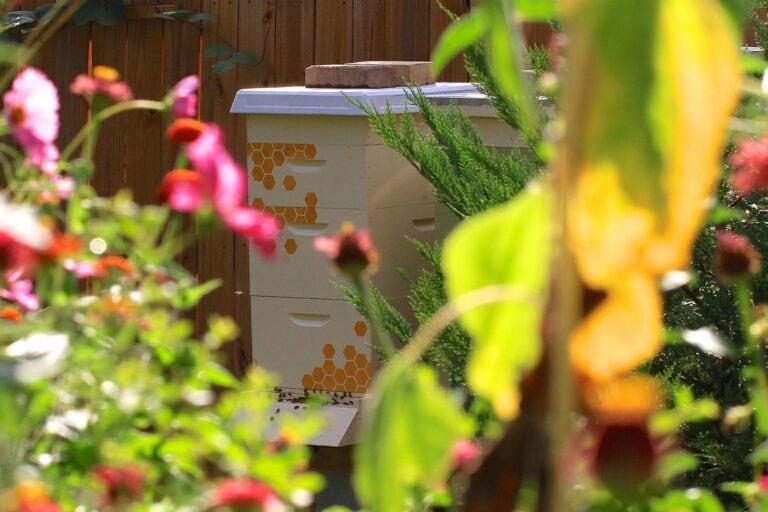Pollen Collection by Honey Bees and Possible Health Benefits
Pollen collection by honey bees and possible health benefits. Honey bees perform a crucial task in the pollination of many flowering plants, including commercial crops,…
Pollen collection by honey bees and possible health benefits.
Honey bees perform a crucial task in the pollination of many flowering plants, including commercial crops, but they also collect pollen, along with nectar, as a vital food source. A typical colony may gather nearly 50 kilograms of pollen in one season. Honey bees have a structure called a pollen basket, or corbicula, on the tibia of their hind legs. This consists of a smooth cavity surrounded by a fringe of hairs. The bees brush pollen that has collected on the anterior portions of their bodies back to the hind legs to the special pollen combs, which are used to comb and compact the pollen, before transferring it to the corbiculae. Most bees will collect either nectar or pollen on a single foraging trip, but some may collect both. A bee can carry up to half its body weight in pollen.
Pollen is the primary source of protein for the hive, but the forager bees do not consume it themselves, since they no longer produce the proteolytic enzymes require for digestion. The pollen is unloaded into open cells located in a band between the brood and the honeycomb. Worker bees then tamp the pollen into place with their heads, removing air, and may add nectar, honey or glandular secretions. More loads of pollen are packed on top, often resulting in multicoloured layers due to a variety of plant sources. Although they will typically visit a single type of flower on any given trip, foragers appear to prefer a diverse range of pollens, possibly to ensure the colony has a more balanced diet. Finally, the cells are sealed with a layer of honey. The pollen then ferments into a product known as ‘bee bread’ or ‘bee pollen’.
Bee pollen varies considerably in composition, but contains significant amounts of simple sugars and proteins, along with vitamins, minerals and fatty acids. Although it may also contain a diversity of microbial organisms, spoilage is inhibited and it preserves well, like honey. Pollen is crucial for brood development; it is consumed by young workers (or nurses) in order to produce royal jelly, which is fed to young larvae. Bee bread is subsequently also fed to larvae other than queens, which receive only royal jelly throughout their development.
Bee pollen is often used as a dietary supplement by humans, and has been touted as a form of ‘super food’, capable of medical miracles, that constitutes a rich source of vitamins and minerals, and also inhibits the development of many harmful bacteria. It is widely used by herbalists and as a tonic in traditional Chinese medicine. Claimed to be capable of correcting nutritional imbalances, it is also maintained to protect against radiation and is thought by some to be useful in the treatment of cancer. Besides being advocated for general health and well being, bee pollen has been used in a variety of therapeutic applications including: the stimulation of appetite; to combat premature ageing; allergy treatment; gastrointestinal problems; bleeding; weight loss; menstrual issues; rheumatism; longevity; improvement of sexual function; recovery from chronic illness; developmental problems in children; and topically for skin care and conditions. It is also claimed to deliver an ergogenic benefit, in that it can enhance althletic performance.
Despite the hype, there is a general lack of tangible evidence, including clinical trials and other rigorous scientific research, of the efficacy of bee pollen or bee bread as a therapeutic agent. If you are considering taking bee pollen as a supplement, remember that there have been instances of anaphylactic reactions, and that it has been deemed unsafe for pregnant women, and those who are breastfeeding.


